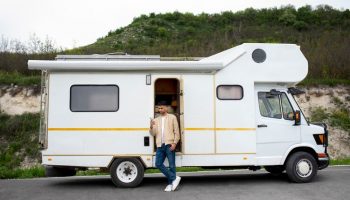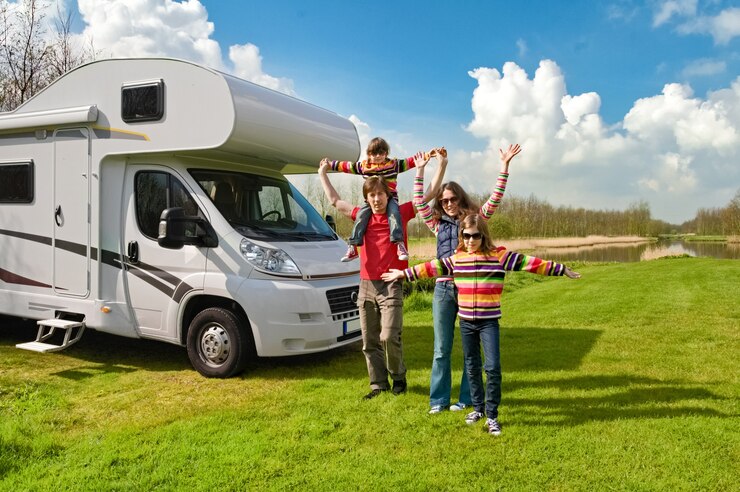Societal norms are changing fast as it pertains to home ownership. In the past, the American dream was a single-family home with a white picket fence.
Those days are long gone as the price of a single-family home is unaffordable. Generation Z and Millennials are turned off by surging home prices and mortgage rates.
Traditional homeownership no longer jives with today’s evolving population. Young people want to travel the world and a single-family home only ties them down.
Perhaps this is why more than 11 million Americans now own a Recreational Vehicle (RV). Read on to learn why millions are living in a motorhome. Explore topics such as RV safety so that you are prepared to make a lifestyle change.
Why Are Millions Living in a Motorhome?

Before we dive into safety tips, it is important to explore why RV living is so popular. In the 35-54 age demographic, more than 11% of households own an RV. This is a higher ownership rate than the 55+ age group.
Conventional wisdom would say that 35 to 54-year-olds are looking to settle down. This group typically has young children and seemed to prioritize stability.
However, times have changed and people now desire flexibility and adventure. RV owners take 3 to 4 vacations per year. They also use their RV to attend sporting events, festivals, and other outdoor events.
Living in an RV is also affordable. You can reduce your housing or vacation expenses by choosing to live in an RV.
At the same time, motorhome owners are not sacrificing comfort. Today’s RVs have the same amenities as single-family homes. Take a look at Roadtrek Motorhomes to preview the inside of a modern RV.
Kitchens and bathrooms are fully-equipped. Flat-screen TVs are mounted to the walls. Central heating and airflow throughout the RV so that you are always comfortable.
How to Travel Safely in an RV?

Many that make the decision to live or travel in an RV worry about safety. Some have never operated a vehicle as large as an RV. They may not have experience with towing a commuter car or RV maintenance.
The good news is that we are here to help. Continue reading on to explore safety tips for motorhome owners:
Planning
Robust planning is the key to the safe operation of a motorhome. Planning includes several different elements from weather tracking to parking.
For starters, it is not easy to operate an RV during inclement weather. Before taking off, it is wise to check the weather and avoid harsh storms. While you may have a deadline, waiting an extra day to travel is the smart bet.
Depending on where you are, it is also wise to scout out the directions to your destination. Are there any tight bridges or tunnels that are unsafe for a large RV? It is safest to travel on wide roads and highways that have a shoulder for distressed vehicles.
You should also perform some research on where you are parking for the evening. Many RV owners like to park in a Wal-Mart lot or other intermediate locations before they arrive at a campground.
It is important to look into criminal history before settling in. The last thing you want to do is put your family in jeopardy by parking in an unsafe area.
Social Media
Today’s generation loves to post on social media about their travel activities. They check in to specific restaurants or venues to let everyone know where they are at.
Many people have location enabled on their mobile devices. This allows people to monitor your whereabouts using popular apps like Snapchat.
There are many dangers to using social media this way as a motorhome owner. For starters, you are letting criminals know when your RV or primary residence is vacant. If a thief knows you are going on a cross-country trip, your home is vulnerable to burglary.
There is an easy solution to ensure your family and property’s safety. Simply wait until your trip is over to post pictures or highlights from your vacation.
RV Maintenance
You should know the basics of RV maintenance before embarking on a long trip. Imagine breaking down in an uninhabited desert in Arizona or Nevada. What will you do without cell service and basic maintenance knowledge?
For example, it is imperative that you know how to change an RV tire. Before taking off, make sure that your spare tire has the appropriate air pressure. Also, ensure that you have all tools required to change a tire including a suitable jack.
Other basics to know about are changing windshield wipers and replacing fluid. You should learn how to change out air filters and check engine oil. It is wise to get familiar with the manufacturer’s repair manual and all preventative maintenance.
Get your RV inspected before each long journey. Have a certified repair technician look at critical parts like RV brake pads and rotors.
Emergency Preparedness
Part of the allure of owning an RV is adventuring across the country. This includes stops at some remote locations that do not necessarily have cell service.
How are you preparing in the event of an emergency? For starters, you should have a mechanism to contact first responders besides a cell phone. We recommend investing in a Personal Locator Beacon (PLB) or Satellite Emergency Notification Device (SEND).
You should also carry a robust first aid kit with you. The most prepared travelers invest in an automated external defibrillator (AED) in the event of a cardiac event. You can never be too prepared for a health crisis.
Your Guide to Motorhome Safety

You now have a basic understanding of RV safety. Planning and preparedness are the name of the game.
There are many other things you should consider when living in an RV. Self-defense is just one of many other safety-related topics to discuss with your traveling companions.
If you enjoyed this article about safety tips when living in a motorhome, check out our blog for more great content.
Additional:




























